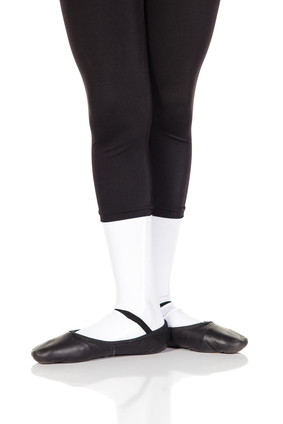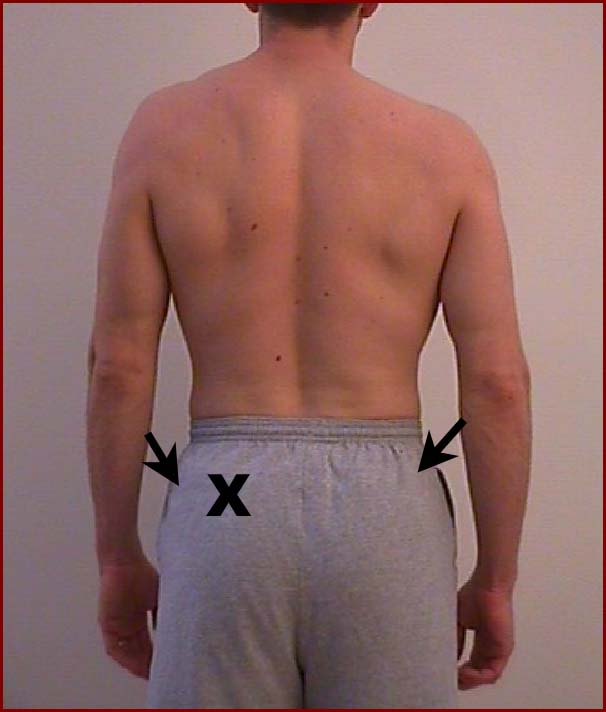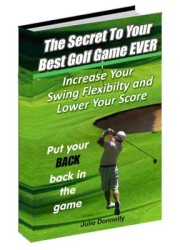Twisted Knee Pain – A Common Golf Injury!
Twisted knee pain is commonly caused by the torque your body places on your knee as you complete your golf swing.
If you are a right-handed golfer, your left knee torques, and vice versa for left-handed golfers.
While the torque is unavoidable if you are applying the techniques necessary for a proper swing, the injury is avoidable!
our Best Golf Game EVER eBook, gives you the ability to relieve the tension on those muscles or prepare them, with proper by releasing spasms and stretching to prevent injury.
As you look at the picture above, notice how this golfer’s left leg and foot are held in a steady position in order to hit the ball correctly. The lower left leg bone is facing totally to the right, and his upper left leg bone is now turned all the way toward the left – setting up the twisted knee pain situation with every ball he hits!
Meanwhile, his hips and right leg have swung all the way to the left in line with the correct angle of the direction of the perfect ball strike.
Why Muscles are the culprits in a Golfer’s Twisted Knee Pain
Unlike a sprained knee that occurs when a person has a traumatic accident, a golfer’s twisted knee pain comes slowly as the repetitive movement gradually puts a strain on the knee joint.

The muscles that turn the hip out are the gluteus maximus, gluteus medius, and the six lateral rotators. Each of these muscles causes the hip and thigh bone to turn toward the outside as shown in this picture of a ballet dancer.
The golfer’s left hip and thighbone are turning out, but his lower leg is planted forward. If you visualize only moving this dancers lower leg to point forward while keeping her upper leg turned out, you can see the strain placed on the knee joint and why it will cause twisted knee pain.
You don’t usually feel pain immediately, but over time the constant torque on your knee joint gives you a twisted knee pain that feels like an ache, rather than a sharp pain.
The most important thing to do to prevent twisted knee pain is to release the tension in the muscles that are causing the torque.

Begin by placing the Julstro Perfect Ball (or substitute with a tennis ball, although it’s not as effective) at the point of the arrows (shown on picture).
Lean up against a wall, pressing the muscles into the ball, and search for “hot spots” (also known as spasms/knots that are shortening the muscle fibers), you will feel pain when you hit a hot spot.
It’s important to keep the pressure at a “hurts so good” level for at least 15-30 seconds.
Continue to slowly move the ball along your sacrum (the flat bone you feel at the base of your spine), toward the “X” (location of the lateral rotators explained above), and down toward the bottom of your sacrum.
As you move the ball you will feel multiple tender points all along the length of the bone. Each tender spot is a spasm/knot in your muscles that is putting a strain on your hip and thigh bone, pulling on your hip and upper leg so your leg is rotating away toward the outside, just like our dancer’s legs and feet.
These muscles can easily be relaxed and the spasms released by YOU to eliminate twisted knee pain, and hip pain!

The Secret to Your Best Golf Game EVER
This eBook has everything you need to keep you on the golf course and playing the game you love!
- Photographs of each self-applied treatment
- Detailed descriptions of how to do each application at home or right on the golf course
- Explains how the applications eliminate and prevent common golfer’s aches and pains
- Covers discomfort from your neck to your
Your flexibility increases, your golf score improves and the pain that holds you back is eliminated.
YOU CAN STOP THE PAIN THAT CAN HURT YOUR GAME!
Now that’s a useful handicap!
Wishing you well,
